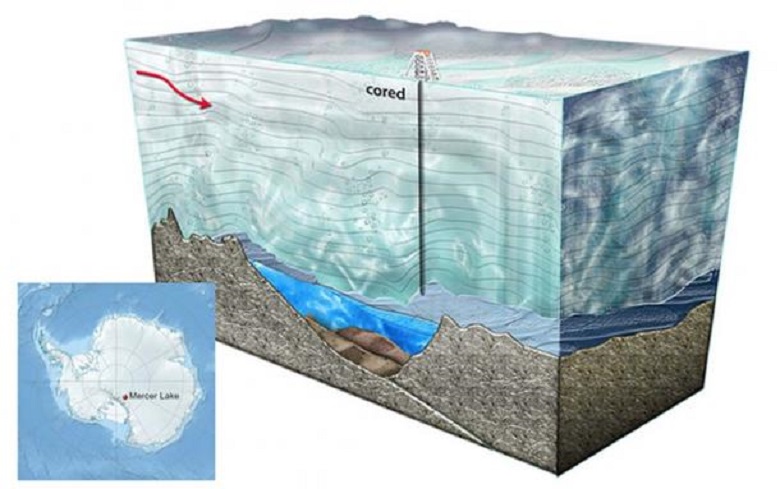Unusual finds and discoveries in the lakes of the world

Lakes are threshold spaces. Not only can water be found in a lake, but there are also my unusal things discovered in the body of water surrounded by the land.
The world is divided into what is the atmosphere and what is below. They can also become creepy places where waves behave strangely, and it’s easy to imagine different things lurking in the dark depths below. While some people are wary of the lakes, others actively explore them to uncover the secrets they hide.
Here are eight discoveries that might push you to dive into the lake.
1. Religious place

Lake Titicaca is the most incredible freshwater lake in South America and the highest navigable lake in the world. It has attracted interest for a long time; ancient civilizations lived next to it and talked about it in their myths. The Incas believed that the god Kon Tiki Viracocha came out of the waters of Lake Titicaca and brought the first people with him. It was also thought that the founder of the royal line of the Incas was born on an isle located in the middle of the lake. Inca ruins can be found worldwide, but there is something ancient hidden inside the lake.
In 2000, archaeologists discovered a temple measuring 200 meters by 50 meters, dating back to around 500-1000 AD, making it pre-Inca. Built by the Tiwanaku people, the temple is just one of their religious sites discovered. In 2013, beautiful objects of gold were brought to the surface, along with ceramics and bones – all gifts to the gods of Tiwanaku. One of the most exciting discoveries was the image of an animal that is a hybrid of a llama and a cougar.
2. Tiny animals

Not all lakes are in pleasant locations. Some of them are almost unfeasible to find without using the latest technology. Lake Mercer in Antarctica is submerged under 1 km of ice. People couldn’t get to it until 2018 when a team of researchers managed to drill a small hole in the ice. What they found shocked scientists – it was the tardigrade and the bodies of tiny crustacean-like creatures.
Tardigrades are known for withstanding high pressures, a wide range of temperatures, and even the vacuum of space. But the one brought from Lake Mercer mainly was dead, a former tardigrade. Interestingly, the remains found at the bottom of the lake were that they resembled species known to live on land. It looks like the creatures were trapped when the climatic conditions changed. Scientists continue to explore the lake to see if any life forms have adapted to complete darkness and living conditions under the ice.
3. Mungo Man and lady

While Lake Mercer emerged and survived due to climate change, this change led to the demise of Lake Mungo in Australia. As the region became drier, the lake shrank and became more alkaline before finally drying up several thousand years ago. In the dried mud at the end of the lake, there are traces left 20,000 years ago. One group of footprints belongs to children and adolescents who walked together. Another group belongs to fast-walking hunters, including the one-legged man who quickly jumped after the others.
Jim Bowler discovered two human skeletons in Lake Mungo that date back about 40,000 years ago. Called Mungo Man and Mungo lady, they testify how long Indigenous Australians have lived in the country. The remains of the Mungo lady are also examples of the earliest burial found in the world. The remains of Mungo’s man and woman were taken from the site for further study. But since then, they have been returned to the indigenous people, who claim that these people were their ancestors.
4. Gold

In 2015, a 16-year-old girl, while on vacation, decided to swim in Lake Konigssee. About 1.8 meters below the surface of the lake, she noticed something shiny and dived to pick it up. In this case, everything that glittered turned out to be gold. She returned with a 500-gram gold bar worth about € 16,000. Since the lake was only 3 kilometers from Hitler’s former holiday home, rumors of Nazi treasures quickly spread.
Six months after she handed the gold over to the police to identify its owner, the police returned the gold bar to the girl. According to German law, if the original owner does not claim the lost item within six months, the person who found it will take it. Research has proven that the gold bar is not part of the Nazi hoard. But whoever put it in the lake took the trouble to spoil the numbers that made up the number on the nugget, which would make it easier to find its owner. How the gold bar ended up at the bottom of the lake will most likely never be known.
5. Trees and wagon

Lake Detroit was only formed in 1953 when a dam was built. The resulting reservoir is home to fish and other creatures, and Old Detroit is hidden underneath. Every year, when the water level drops and the shores of the lake are exposed, you can see the stand of trees that were cut down for the construction of the dam. However, the ghostly remnants of the forest are not all that lurks in Detroit Lake. In recent years, the lake’s water level has dropped to unprecedented lows, and traces of Old Detroit have emerged. In 2015, when the water level dropped 44 meters, a perfectly preserved 19th-century wagon was found sticking out of the mud.
In addition to other remains of the city, which was once home to 200 people, a strange octagonal pit has been discovered. No one could say what it was used for then until the lake was refilled. Future archaeologists can only wait for the next dry summer.
6. Tanks

During World War II, the Nazi invasion of the Soviet Union resulted in vast numbers of tanks driving across Eastern Europe. Belarus suffered greatly from the bloody battles, and in many places, you can still see the scars of a terrible war. In addition to human remains and shell craters, researchers found many strikingly well-preserved tanks hiding in lakes and swamps. The Yakushev family became experts in finding tanks and freeing them from lake and swamp mud.
Even though many of the tanks found by the Yakushevs were buried and flooded for decades, they were restored and are in working order. In many cases, this good preservation was aided by the anaerobic conditions provided by the mud, as the tanks were unable to reach oxygen and did not rust. From the discovered tanks, you can glean a lot of information about front-line conditions. One Soviet T-34, after falling into the hands of the Nazis, was repainted in Nazi colors and sent to war with Soviet soldiers.
7. Ships of Nemi

Lake Nemi in Italy is a tiny lake that hid a huge secret. Local anglers have always known that there are sunken ships in the water and often dived for artifacts sold to tourists. Early attempts to conduct an underwater archaeological expedition failed. But in 1927, Mussolini ordered the lake to be drained to expose the ships. The remains of two ships were found, each about 76 meters long and 21 meters wide. They appear huge, and it is no surprise that they were built by the somewhat unbalanced emperor Caligula.
These ships were magnificent floating palaces. Their hulls were covered with lead, and the decks were marble, mosaic and gilded. Why Caligula built these ships on such a small lake, we will probably never know. These two ships were destroyed in a fire during World War II. But archaeologists are still exploring Lake Nemi to find more.
8. Sword

One eight-year-old girl proved herself to be a true warrior queen when she pulled an ancient sword from the lake. Saga Vanecek was throwing stones at Lake Vidostern when she reached out to remove what she took for a stick out of the mud. Instead, she found the handle and raised the sword, saying, “Dad, I found the sword.”
It was not just a sword. At 1,500 years old, it was older than the Vikings. Now, this 85-centimeter weapon is being restored. Archaeologists looking for more artifacts have found a brooch but do not yet know how the items ended up in the lake. Additional work is being done to find something else.




